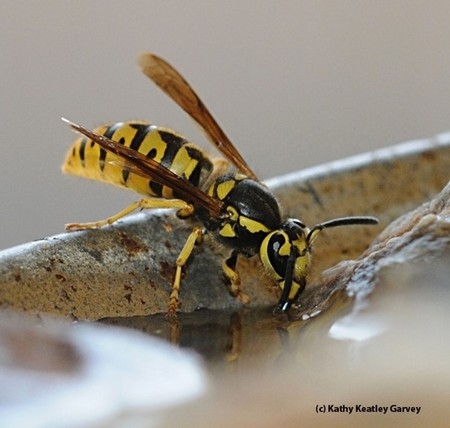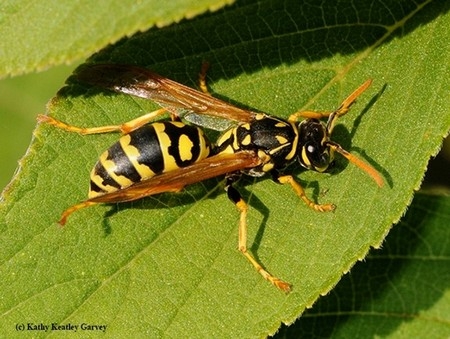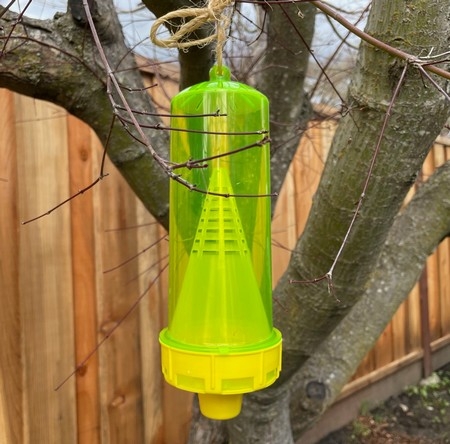Posts Tagged: wasps
Lawn-pocalypse! Surviving Drought
Ah, summer! The season of sunburns, pool parties, and… lawn droughts. If your once lush, green carpet now looks like a crunchy brown doormat, you're not alone. Let's dive into why your yard is staging a dramatic death scene and what you can do to...

Bermuda grass and weeds overtaking drought stressed turf grass.
Yellowjackets
Were you bothered by yellowjackets last summer? Now is the time to get traps baited and placed outdoors. Overwintering western yellowjacket queens have been dormant all winter and are emerging now that spring is here, to feed and start a new nest. If you can capture the queen, you can prevent a new colony from forming.
There are two kinds of social wasps in our area that look somewhat alike—yellowjackets and paper wasps. Yellowjackets are the more problematic ones because their colonies can be much larger—there can be several thousand or up to fifteen thousand—and they vigorously defend their nests when disturbed. Their nests are usually underground in rodent burrows. These are the wasps that visit picnics and barbecues to scavenge meat and sugary foods.
Paper wasps are less defensive and rarely sting people. They build their paper nests in protected areas such as under house eaves. They can be a problem when the nest is over a doorway. The population in a nest is seldom over 100 wasps and is commonly only one or two dozen wasps.
Both yellowjackets and paper wasps provide a beneficial service by eating large numbers of pest insects. It is later in the summer when their colonies have grown larger and need more and more food that yellowjackets become scavengers, looking for whatever protein or sugar sources they can find. At this point, it is almost impossible to control their population. This is why it's so important to start the control process before you start to see yellowjackets flying around your picnic.
You can purchase yellowjacket traps at hardware stores or nurseries. These yellow plastic traps have a chemical attractant that lures yellowjackets into the trap. Follow package directions carefully. Make sure you don't get the attractant on your hands when you are setting it up to avoid attracting yellowjackets to your hands.
What to do if you find a nest on your property? Contra Costa Mosquito and Vector Control will treat ground-nesting yellowjackets at no charge. Contact them at 925-685-9301 or https://www.contracostamosquito.com/request-services For above-ground nests, you should call a licensed pest control company.
For more information on controlling yellowjackets and other social wasps, see this link: https://ipm.ucanr.edu/PMG/PESTNOTES/pn7450.html
Quick Tips: https://ipm.ucanr.edu/QT/yellowjacketscard.html
Help Desk of the UC Master Gardeners of Contra Costa County (SEH)
Social Wasps Are Great Artists and Architects, But So Are....
When it comes to building nests, social wasps are great artists and architects. But so were the participants in the family arts-and-crafts activity at the Bohart Museum of Entomology open house on social wasps, held Saturday, Jan. 20 in Room...
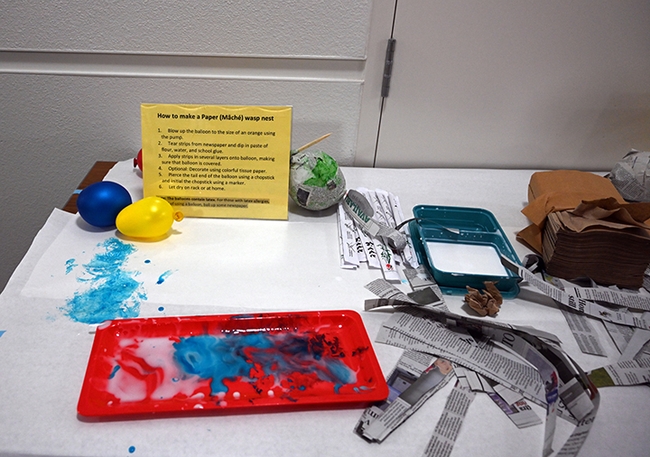
Bohart Museum of Entomology set out instructions on how to make a paper mache wasp nest. (Photo by Kathy Keatley Garvey)
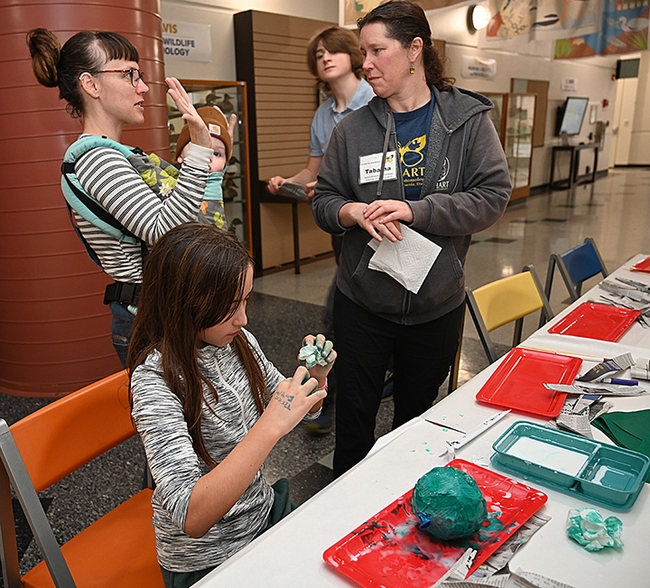
Skylan Potter, 11, of Sacramento works on creating a wasp nest at the Bohart Museum of Entomology open house. In back are her mother, Camille Potter, and baby brother, Kehlan Kaufeldt, age 1; Tabatha Yang, Bohart education and outreach coordinator and Bohart associate Andrew Logan, who staffed the table. (Photo by Kathy Keatley Garvey)
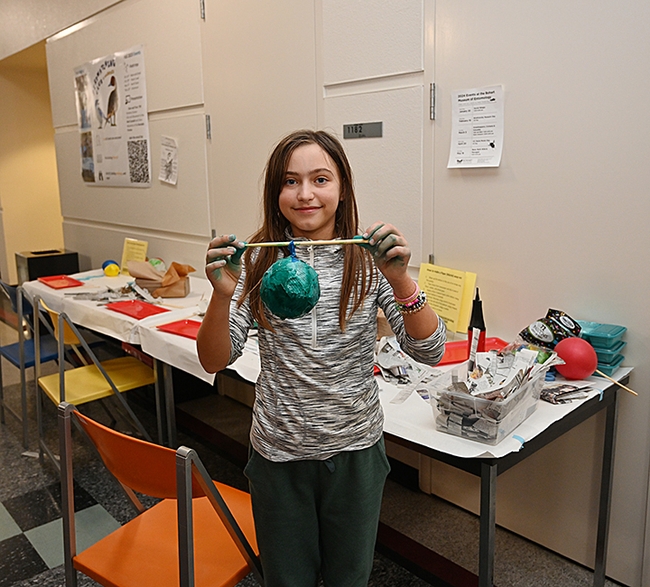
Skylan Potter displays her newly created social wasp nest. (Photo by Kathy Keatley Garvey)
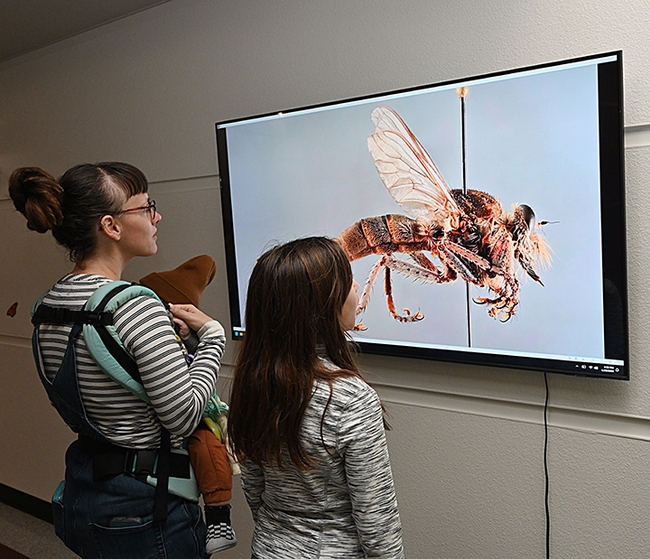
Camille Potter and her daughter, Skylan and son, Kehlan, Sacramento, admire a species of robber fly (family Asilidae) at the entrance to the Bohart Museum. (Photo by Kathy Keatley Garvey)
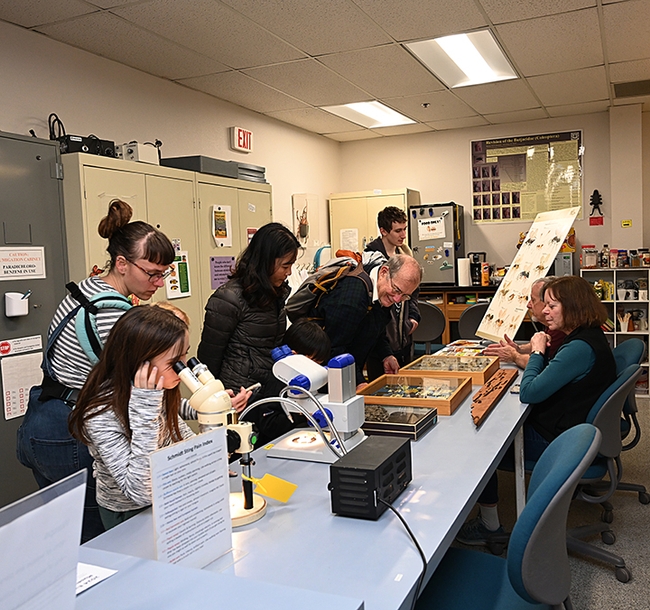
Bohart associate and entomologist Sandy Shanks (right) and researcher and retired senior museum scientist Steve Heydon (partially hidden) answer questions about Hymenoptera. (Photo by Kathy Keatley Garvey)
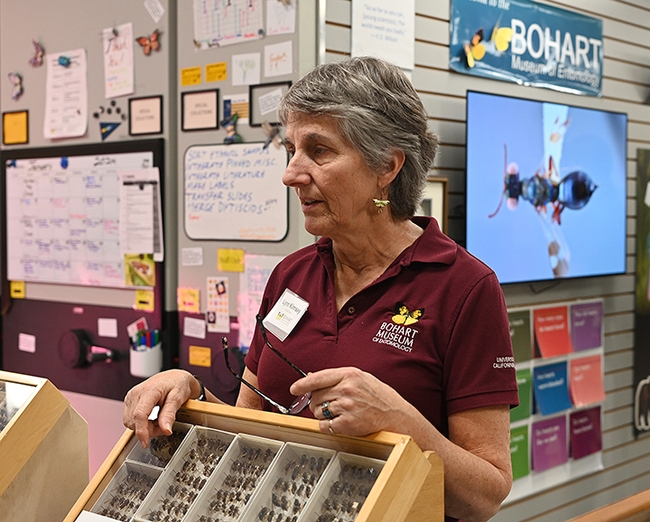
UC Davis distingished professor Lynn Kimsey, director of the Bohart Museum of Entomology, answers questions on social wasps. (Photo by Kathy Keatley Garvey)
Bohart Museum: How to Make a Paper Wasp Nest
When the Bohart Museum of Entomology hosts an open house on "Social Wasps" from 1 to 4 p.m., Saturday, Jan. 20, the traditional family art-and-crafts activity will be something special. "We will be doing paper mache wasp nests; I'm...
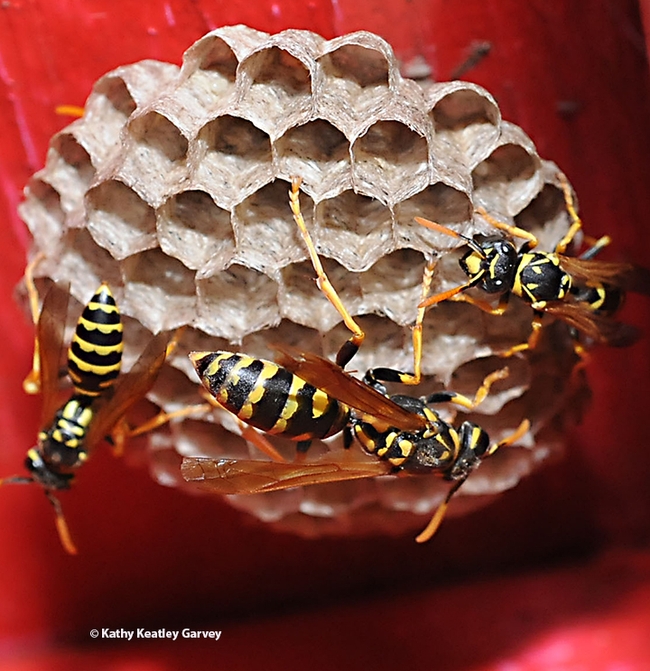
The makings of a European paper wasp nest in Davis. (Photo by Kathy Keatley Garvey)
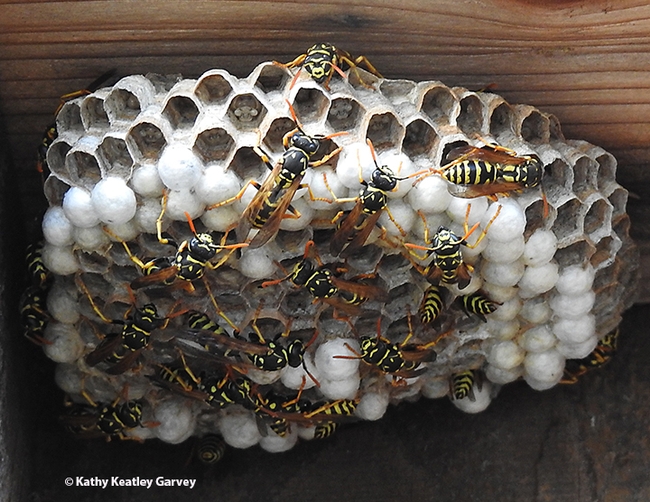
A fully occupied European paper wasp nest on a Vacaville fence. (Photo by Kathy Keatley Garvey)
Wasps: Fascinating Insects But Often Demonized
If you hate wasps, and brush them off as just "uninvited guests at my picnic," take another look. For one, they're pollinators. Two, they're great predators, contributing to the biocontrol of such lepidopteran pests as...
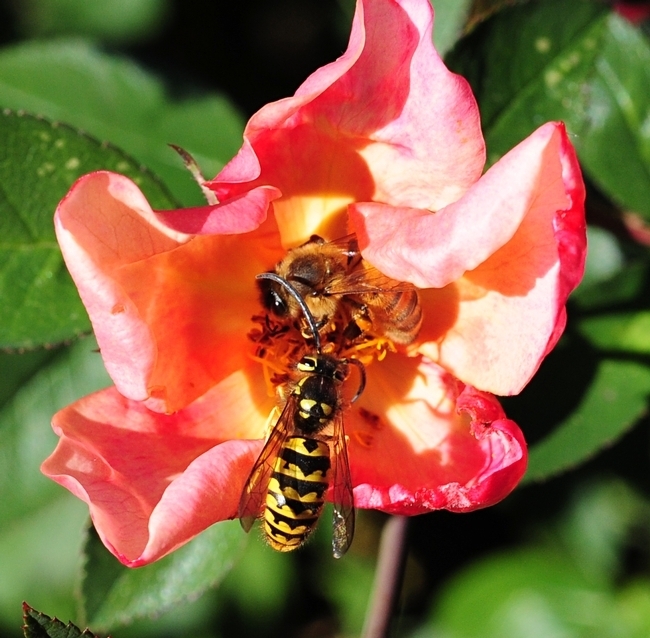
A honey bee and a Western yellowjacket meet on a rose at a UC Davis bee garden. Both are pollinators. (Photo by Kathy Keatley Garvey)
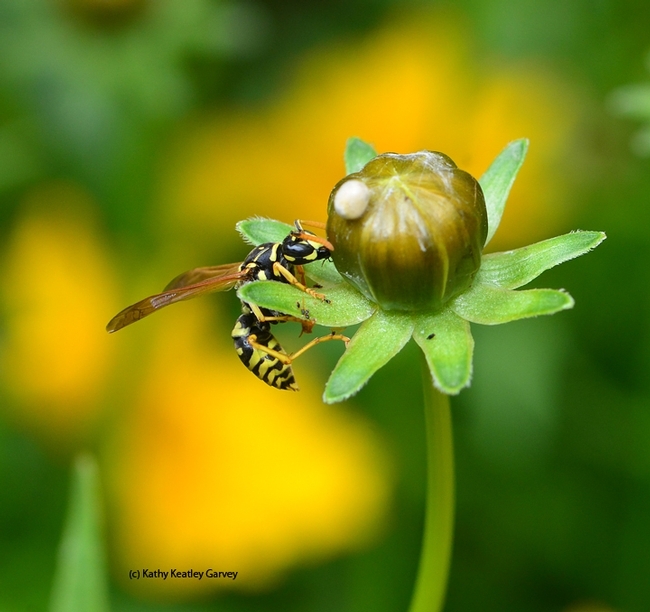
A foraging European paper wasp, Polistes dominula. (Photo by Kathy Keatley Garvey)
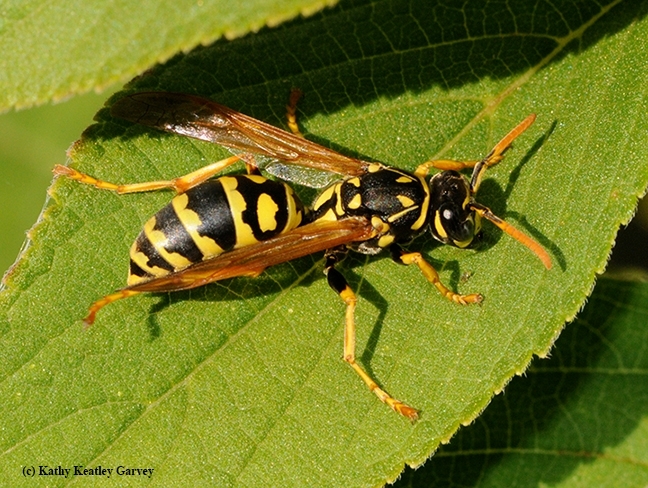
The antennae of the European paper wasp are orange. (Photo by Kathy Keatley Garvey)
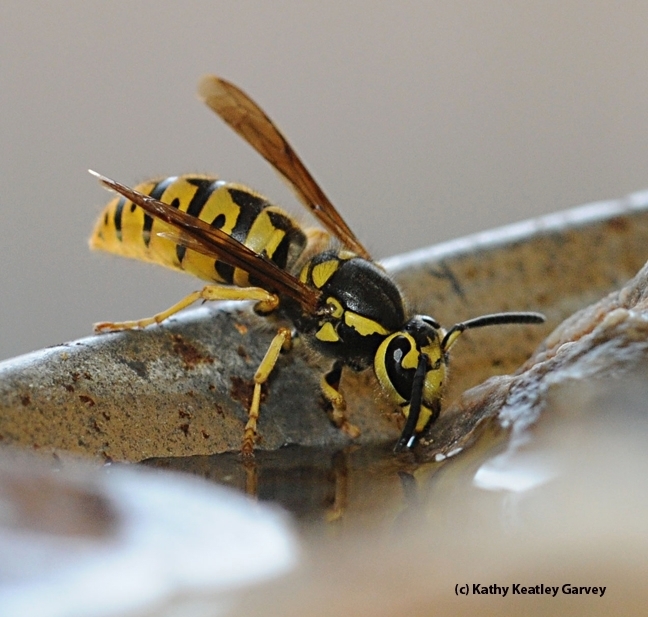
The antennae of the Western yellowjacket, Vespula pensylvanica, are black. (Photo by Kathy Keatley Garvey)

